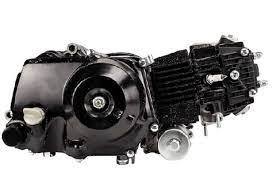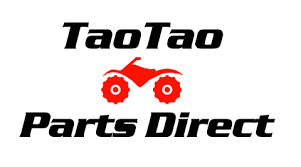
Adjust the Valve Clearances on a 4 Stroke 110cc Engine
Share
Understanding Intake and Exhaust Valve Clearances
When it comes to maintaining the performance and longevity of a 4 stroke 110cc engine, one crucial aspect to consider is the intake and exhaust valve clearances. Valve clearances refer to the space between the valve stem and the rocker arm or tappet when the valve is fully closed.
Proper valve clearances are essential for optimal engine performance. If the clearances are too tight or too loose, it can lead to various issues such as poor engine performance, valve damage, and even engine failure. The valves need to open and close at the right time and in sync with the engine's cycle, allowing for the proper flow of air and fuel mixture in and out of the combustion chamber.
Checking and Adjusting Valve Clearances
To ensure the valve clearances are within the manufacturer's specifications, regular inspections and adjustments are necessary. Here's a step-by-step guide:
- Consult the engine's manual to determine the recommended valve clearance specifications for your specific 110cc engine model.
- Locate the valve cover on top of the cylinder head and remove it using the appropriate tools.
- Rotate the engine's crankshaft until the piston is at top dead center (TDC) on the compression stroke. You can check this by aligning the timing marks on the crankshaft and camshaft sprockets.
- Identify the intake and exhaust valves for the cylinder you are working on. Each valve has a corresponding rocker arm or tappet.
- Using a feeler gauge, measure the clearance between the valve stem and the rocker arm or tappet. Insert the appropriate gauge size and slide it between the two components. The gauge should have a slight drag when inserted.
- If the clearance is not within the recommended range, adjustments are necessary. Loosen the lock nut on the rocker arm or tappet and use the appropriate tool to turn the adjusting screw until the desired clearance is achieved. Remember to hold the adjusting screw in place while tightening the lock nut.
- Recheck the clearance using the feeler gauge to ensure it is now within the correct range.
- Repeat the process for the remaining valves.
It's important to note that valve clearances may differ between the intake and exhaust valves, as well as between different cylinders in multi-cylinder engines. Refer to the engine manual for specific instructions on which valves to adjust and their corresponding clearance values.
Regularly checking and adjusting the valve clearances is crucial to keep your 4 stroke 110cc engine running smoothly. Over time, normal wear and tear can cause the clearances to change, affecting engine performance. By following the manufacturer's recommendations and performing this maintenance task, you can ensure that your engine operates at its best.
Additionally, proper valve clearances contribute to fuel efficiency and emissions control. When the valves are correctly adjusted, the engine can effectively burn the air-fuel mixture, leading to improved combustion efficiency and reduced emissions.
It's worth mentioning that if you notice any unusual engine noises, decreased power output, or other performance issues, it's advisable to check the valve clearances as part of the troubleshooting process. Ignoring out-of-spec valve clearances can lead to more severe engine damage and costly repairs.
If you are unsure about performing the valve clearance adjustment procedure yourself, it is always recommended to consult a professional mechanic. They have the expertise and specialized tools to ensure the job is done correctly and accurately, giving you peace of mind and confidence in your engine's performance.
Furthermore, understanding the role of valve timing is essential when dealing with valve clearances. Valve timing refers to the precise synchronization of the opening and closing of the intake and exhaust valves with the engine's piston movements. It determines the engine's overall performance, including power output, fuel efficiency, and emissions.
Valve timing is controlled by the camshaft, which is driven by the engine's crankshaft. The camshaft has lobes that push against the rocker arms or tappets, opening and closing the valves at specific intervals. It is crucial to maintain the correct valve clearances to ensure proper valve timing.
While the valve clearance adjustment process may seem daunting for beginners, it is a skill that can be learned with practice and guidance. As with any mechanical task, it's important to work in a clean and organized environment, using the appropriate tools and following safety precautions.
Remember to consult your engine's manual for specific instructions and recommended maintenance intervals. Following the manufacturer's guidelines will help you keep your 4 stroke 110cc engine in optimal condition, ensuring reliability and peak performance.
